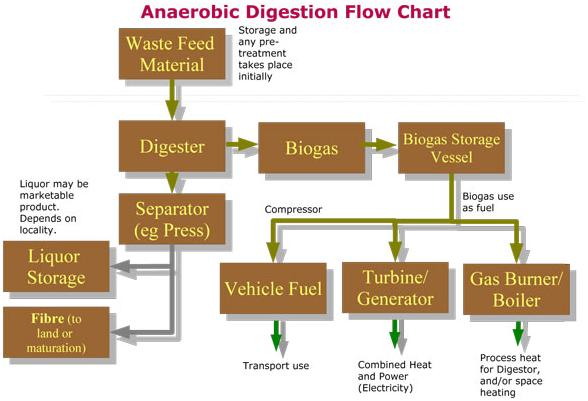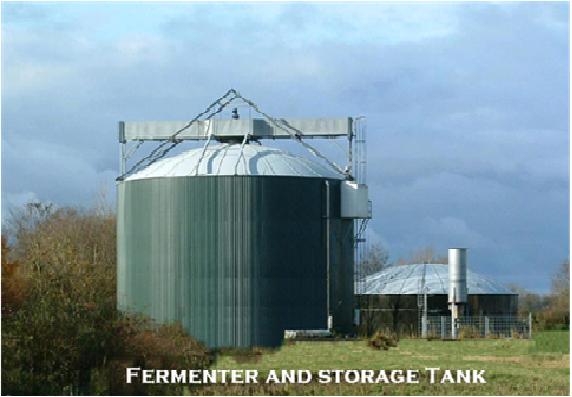anaerobic digestion
Anaerobic digestion
The treatment of any slurry or sludge containing a large amount of organic matter utilizing bacteria and other organisms under anaerobic condition is commonly referred as anaerobic digestion or digestion. Anaerobic digestion consists of the following three stages. The three stages are (i) the enzymatic hydrolysis, (ii) acid formation and (iii) methane formation.
Enzymatic hydrolosis
In this stage, a group of facultative micro-organisms acts upon the organic matter and convert insoluble, complex, high molecular compounds of biomass into simple, soluble, low molecular compounds. The organic substances such as polysaccharide, protein and lipid are converted into mono-saccharide, peptide, amino acids, and fatty acids. Then theay are further converted into acetate, propionate and butyrate.
Acid formation
The micro organisms of facultative and anaerobic group collectively called as acid formers, hydrolyse and ferment the productions of first phase i.e., water soluble substances into volatile acid. The major component of the volatile acid is the acetic acid. In addition to acetate or hydrogen and carbon dioxide, some other acids like butyric acid and propionic acid are also produced.
Methane formation
Finally, acetate or hydrogen plus carbon dioxide are converted into gas mixture of methane and carbon dioxide by the bacteria which are strictly anaerobes. These bacteria are called methanogns. For efficient digestion, these acid formers and methane fermentators must remain in a state of dynamic equilibrium. The remaining indigestible matter is referred as slurry.

